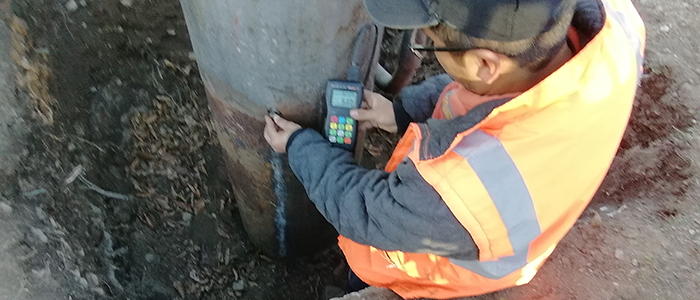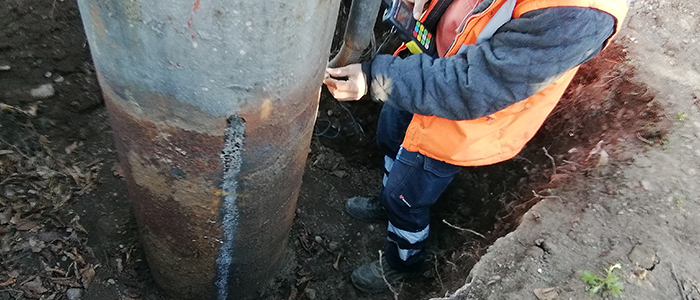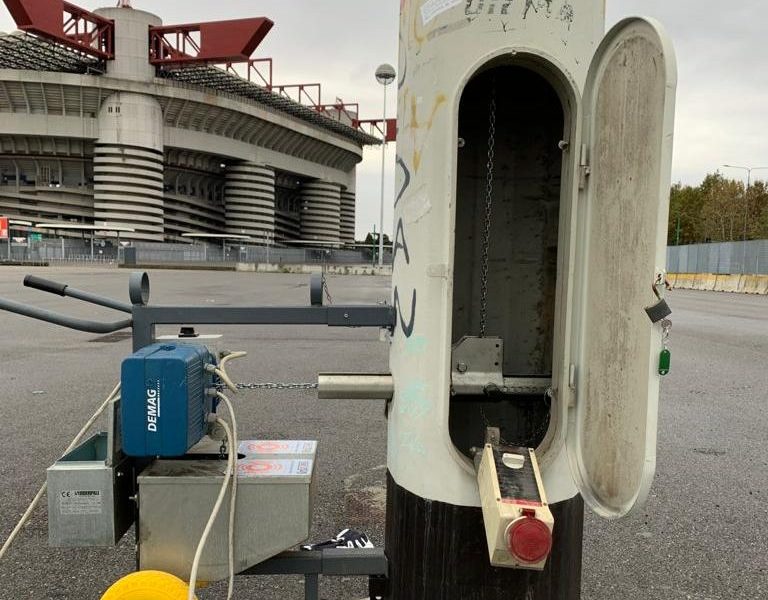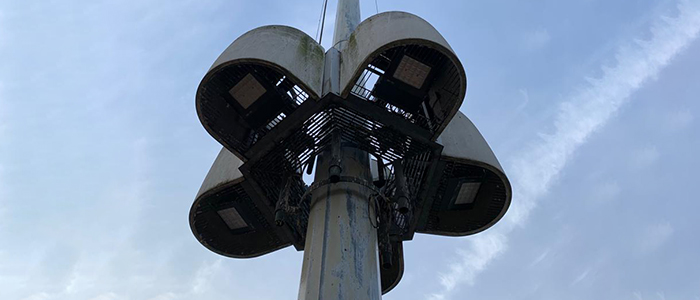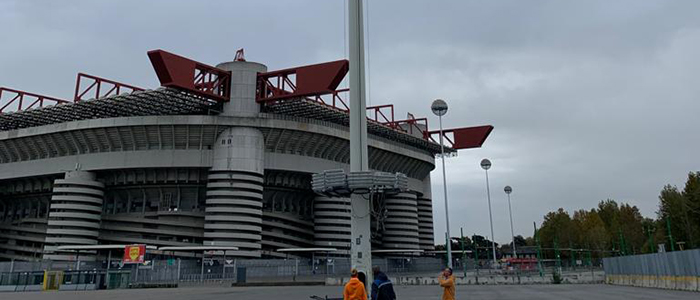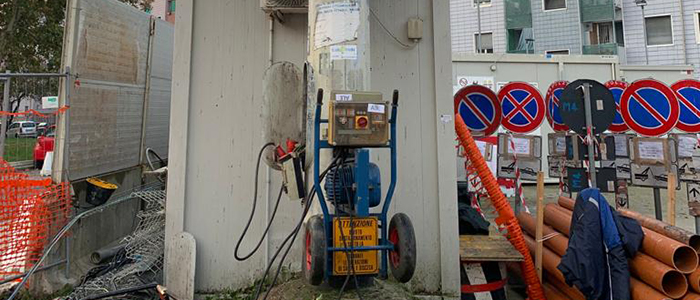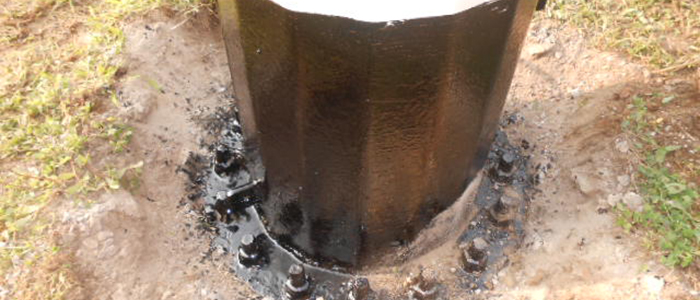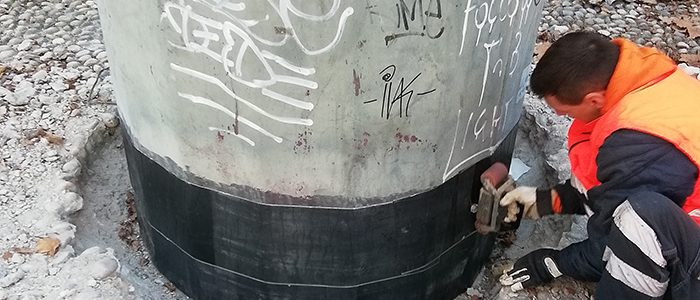Home » Light Towers Mantainance
Light Towers Mantainance
The metal (steel in general) making up the structure of the Light Tower must be periodically checked in order to assess its state of integrity and suitability to remain in service, or that no causes have occurred (mainly processes of an advanced state of oxidation / corrosion) which can adversely affect this integrity and consequently compromise the static condition of the structure.
The Light Towers are to be considered metal structures designed to maintain a certain static condition over time.
They usually have the following construction / geometric characteristics:
- truncated cone longitudinal development with polygonal section;
- longitudinal development with a circular section (with a decreasing diameter towards the top);
- height above ground between 18 and 40 m;
- shaft made of two or more conical elements with forced interlocking;
- barrel made of two or more cylindrical flanged elements;
- release of the Tower to the foundation plinth by means of the shaft flange and log bolts;
- freeing of the Tower to the foundation plinth by anchoring the shaft.
LIST OF THE MAIN INVESTIGATION ACTIVITIES PLANNED
- OUTER SURFACE: Visual inspection (VT) of the external surface along the entire height of the support by means of an aerial platform of adequate height, with reporting of any anomaly found on the metal surface;
- BOLTS : Measurement of the corrosion potentials and / or the corrosion rate relative to the part embedded in the concrete of the anchor bolt with the LPR method;
- ENCLOSURE AREA: Measurement of the corrosion rate and mapping of the corrosion potentials at the base of the Light Tower in order to analyze the state of degradation of the structurally most stressed section with the LPR method;
- WELDINGS: Verification using non-destructive methods to search for any defects in the base / butt welds (butt flange and base flange welding) along the longitudinal welds using the VT (Visual Testing) – MT (Magnetic Particles) methods;
- BOLTS: Verification of bolts using UT methods (ultrasonic defectoscopy);
- THICKNESS OF THE BASE MATERIAL OF THE DRUM: AND OF THE JOINING AREA: Thickness test (UT) along the entire height of the support by means of a platform of adequate height at the points where it is deemed necessary for the characterization of the corrosive state. The choice of points will be based on the construction characteristics of the Tower, investigating the most critical and vulnerable areas. The steel thickness values expressed in mm must be returned;
- LAYER OF ZINC: Control of the thickness of the zinc layer;
- MOBILE CROWN : Check the tightness and corrosion of the fastening elements and anchoring rods (for towers with movable crown), check the correct functioning of the coupling and release mechanism and its eventual cleaning (for towers with movable crown), check that all the elements of the mobile crown are correctly fixed and that residues of dirt have been removed from it;
All controls provided on the mobile crown can be performed with release, movement and positioning of the crown on the ground by means of special winches specially built for all types of lighting towers.
RESTORIATION OF THE PROTECTIVE LAYER AT THE BASE OF THE TOWER
Checking the state of conservation of the underground metal structures supporting the Towers covered by this paragraph involves the following ancillary activities:
- the demolition of the flooring at the base of the support and in particular of the concrete plinth in order to free and make visible the log bolts and the interlocking section of the light tower;
- the removal of any ground at the base that may have been brought back to cover the plinth;
- conservative anticorrosive treatment of all metal parts with a suitable substance as better specified below;
- the restoration, as originally (same materials), of the demolished pavement with restoration of the diamond.
These activities are particularly suitable for:
- Lighting towers for the lighting of motorway junctions
- Lighting towers for public lighting
- Light towers at railway or underground stations or lines
- Light towers located in industrial sites
- Light towers located in shopping centers
- Lighting towers for lighting stadiums or sports fields
- Lighting towers for telephone or audiovisual repeaters or 5g antennas
MAIN REFERENCE STANDARDS
- UNI/TS 11479:2013: Non-destructive tests – Investigation techniques on the state of conservation of steel poles for lighting.
- UNI EN ISO 17640: Non-destructive control of welds – Control by ultrasound – Control techniques, test levels and evaluation.
- UNI EN 40: (tutte le parti) Pali per illuminazione pubblica.
- ASTM G59-97: Standard Test Method for Conducting Potentio dynamic Polarization Resistance Measurements.
- UNI EN 14127: Non-destructive tests – Measurement of thickness by ultrasound.
